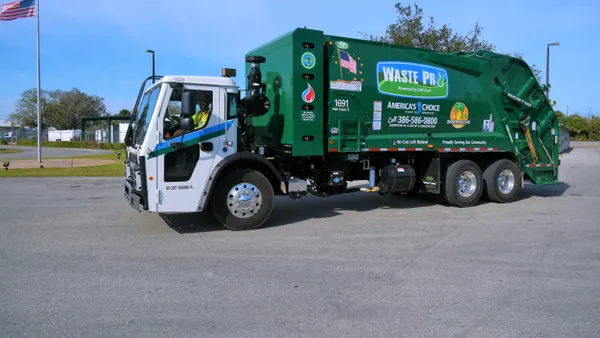Dive Brief:
- In its latest move to boost a dismal recycling rate, Chicago is expected to start leaving "oops" tags on recycling bins this summer to notify residents about materials that don't belong in the bin, as reported by DNAinfo Chicago.
- Chicago will test two types of tags. One type will have check boxes on the back so that sanitation workers can mark exactly what items need to be left out of the bins. "Correct this and we will collect next time," the tags read. The other, to be tested on a single collection route, will only target carts with bagged recyclables.
- Recyclables contained in single-use plastic bags, as opposed to loosely collected in the blue bins, are the most common contaminant, Chicago Director of Streets and Sanitation Chris Sauve told DNAinfo.
Dive Insight:
Chicago has experienced problems with recycling since early 2016 when rules prohibiting bundled recyclables went into effect. Since then, the city has tried a few programs to recoup recycling rates, including a canvas "buddy bag" to make it easier to carry recyclables to residential blue bins, and door-to-door education programs. The city also recently announced an educational effort with The Recycling Partnership that will include digital advertisements and PSAs.
Chicago isn't alone in U.S. cities struggling with recycling rates and contamination. Toledo, OH has a contamination rate approaching 40%, and New York City has seen stagnating numbers in commercial recycling. Chicago and The Recycling Partnership are going to start gathering data on what materials residents are and aren't recycling properly. The data could help the city educate residents in a time when, based on purchasing and packaging changes, it's becoming increasingly unclear for consumers what materials can and can't be recycled.
The concept of placing stickers on bins isn't new and can be used for collection problems outside of contamination. In Fayetteville, NC, the city's Environmental Services Department tested a method of placing stickers on carts to indicate how carts should be placed at the curb for automated collection, which proved visual messaging to be successful.









